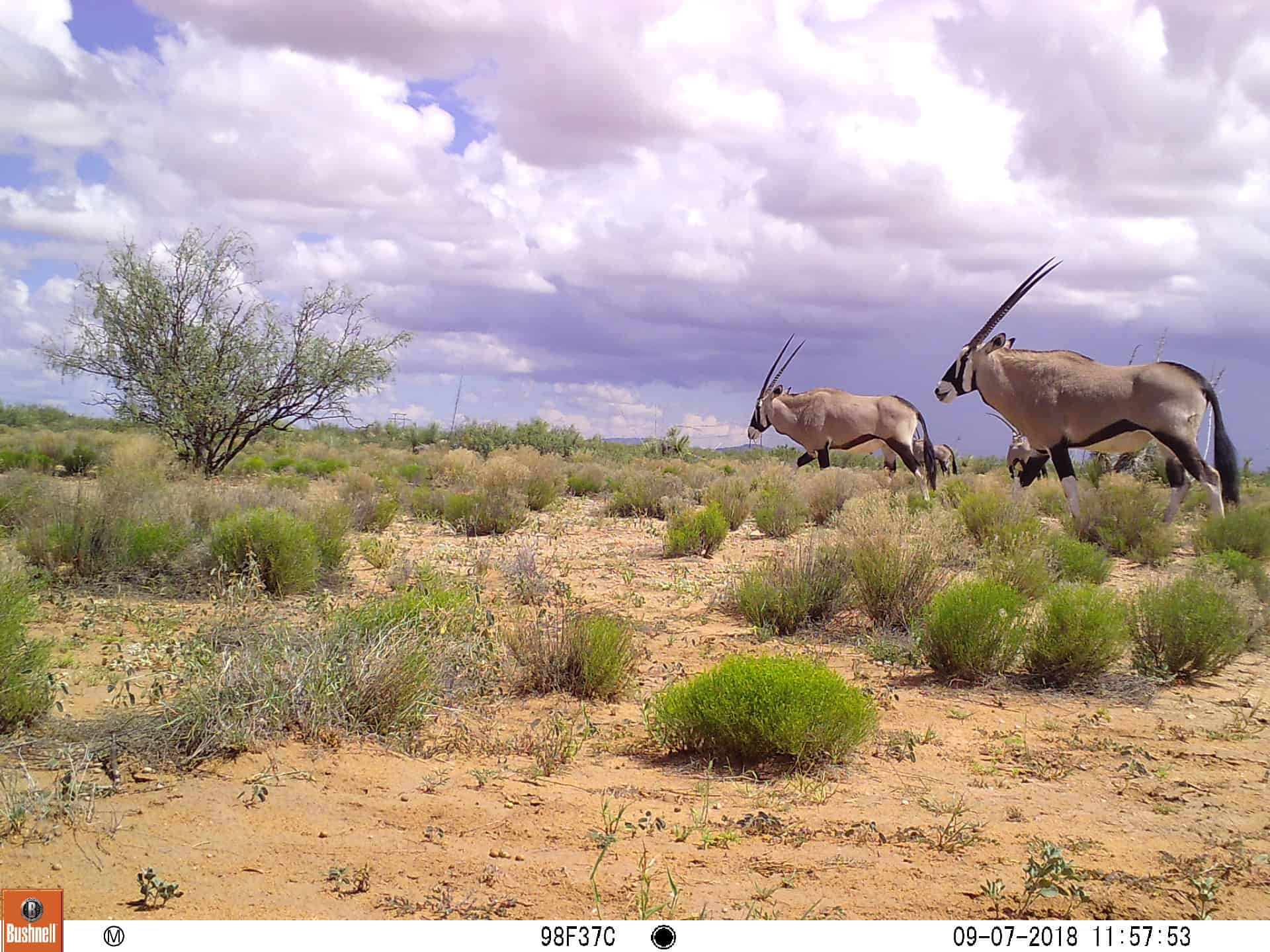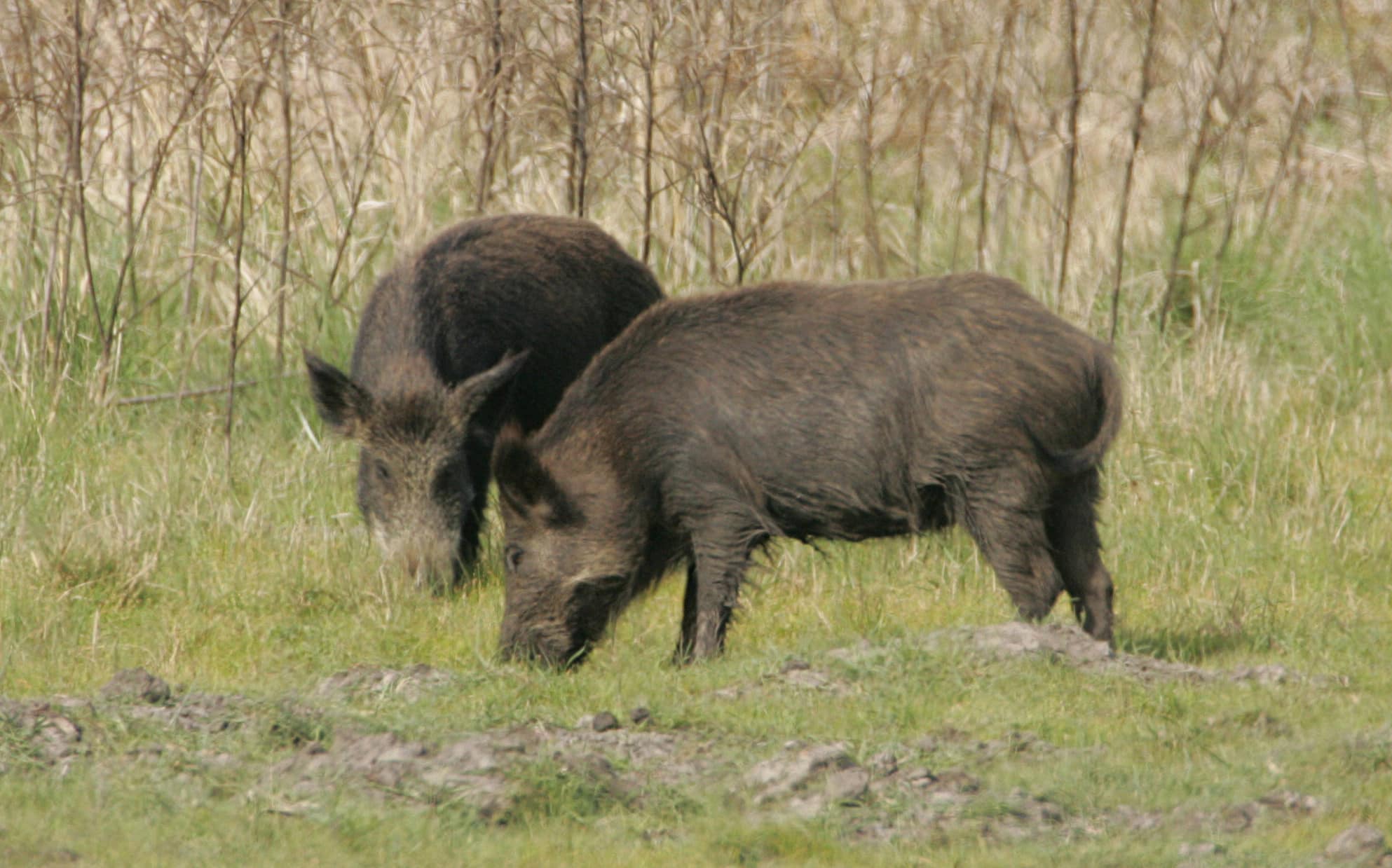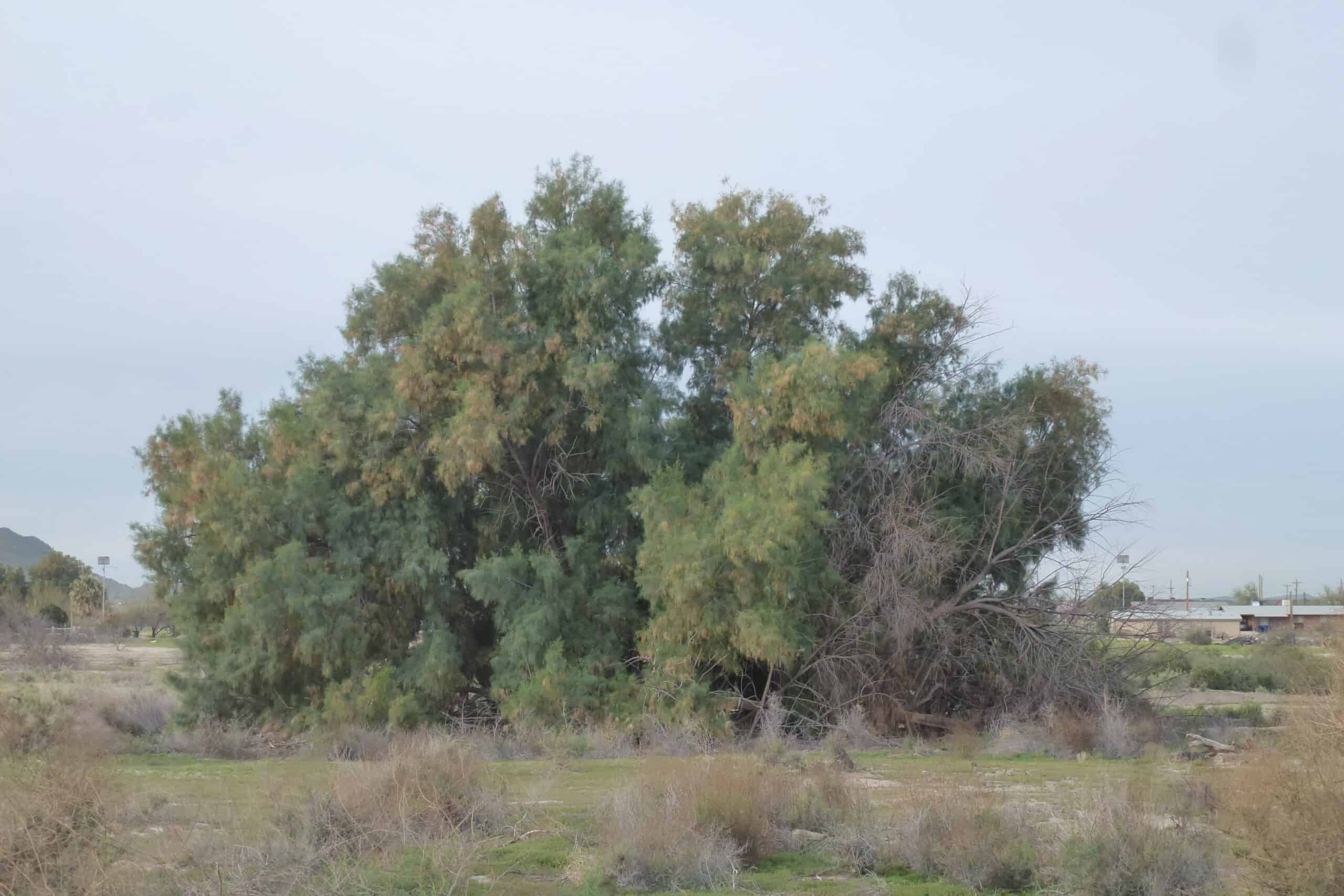Share this article
Wildlife Featured in this article
- South African oryx
- pronghorn
- mule deer
- desert bighorn sheep
Rising oryx numbers may distress New Mexico ecosystem
South African ungulates introduced decades ago have expanded exponentially in Chihuahuan Desert
The sharp horns of South African oryx splay straight up from the back of their zebra-striped heads in a nearly straight line, leaving many people in awe of their beauty.
But looks aren’t everything, especially since these animals are now increasing rapidly in New Mexico, thousands of miles from their native range.
The New Mexico Game and Fish Department first introduced the South African oryx—also known as the gemsbok (Oryx gazella)—to the Tularosa Basin starting in 1969 as a game species. Dozens were released over the next few years, and this relatively small initial population took off.
“They are this classic invasive,” said TWS member Casey Wagnon. “It still remains pretty elusive how to manage [them], because recreational opportunities and revenue generation are at odds with ecosystems impacts and human-oryx conflicts.”
They began to expand into the Jornada Basin, and perhaps beyond, though large-scale surveys are still needed to learn more about their distribution. There are now an estimated several thousand oryx in New Mexico.
“They are highly adapted to the Chihuahua Desert,” Wagnon said.
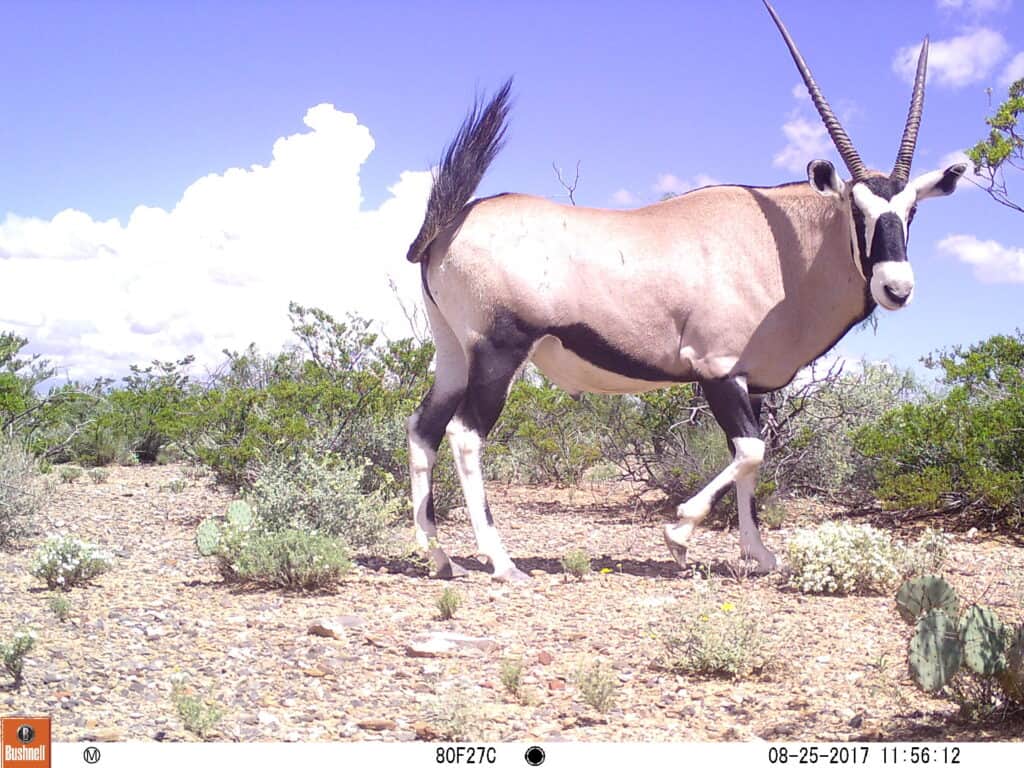
Researchers don’t fully understand the kinds of effects the newcomers may have on the native ecosystem. But some are starting to believe they might be detrimental.
Cattle have threatened the desert grass ecosystem found in some parts of the Chihuahua Desert for some time. When the grasses are overgrazed, shrubs begin to take over the land, rendering the landscape unsuitable for cattle and other species that depend on grassland ecosystems.
Oryx may also overgraze some remnant patches of desert grass, some research shows. They not only compete with cattle, causing issues for ranchers. They can also have detrimental effects on the ecosystem, Wagnon said. In the driest seasons and years, oryx may focus more heavily on the grasses, causing additional stress to the ecosystem.
Aside from the loss of grasslands-specialist species, shrub encroachment can also result in increased erosion as more patches of the earth become bare.
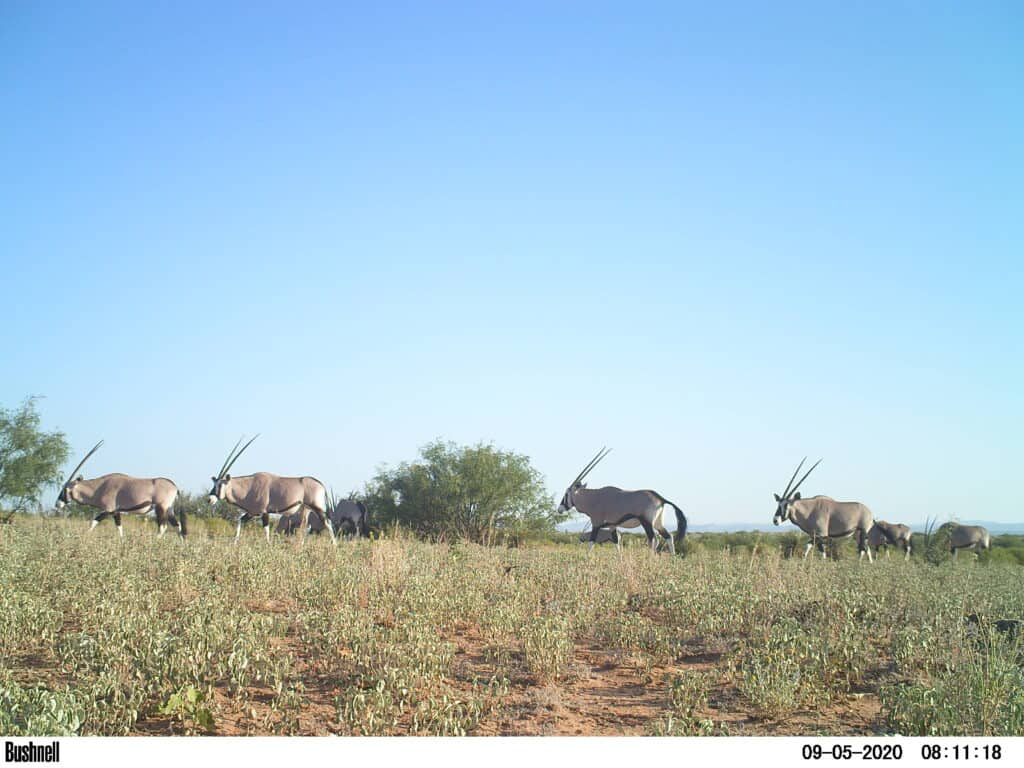
Oryx may outcompete more than just cattle. Their diet overlaps with native species like pronghorn (Antilocapra americana) and mule deer (Odocoileus hemionus). Based on their larger size, and the weapons they wield in the form of nearly three-foot-long horns, they could outcompete these ungulates for water and food, said TWS member Hunter Prude, a wildlife biologist at Turner Biodiversity’s Armendaris Ranch in New Mexico, where oryx numbers are growing.
Wildlife managers at the ranch are concerned. As a way to mitigate some of the effects of drought, they provide artificial water sources for wildlife. But Prude said they are concerned this may also provide an avenue for the oryx to expand. Some efforts are underway to find ways to manipulate these drinking stations to exclude oryx while still allowing access to the native species.
What’s certain is that pronghorn are declining in the ranch, Prude said. But it’s not yet clear whether oryx are outcompeting them or if drought is causing a drop in pronghorn numbers. “Unfortunately, in this region, it’s just the rangeland itself that is imperiled because of climate change,” Prude said. More research on this is currently underway.
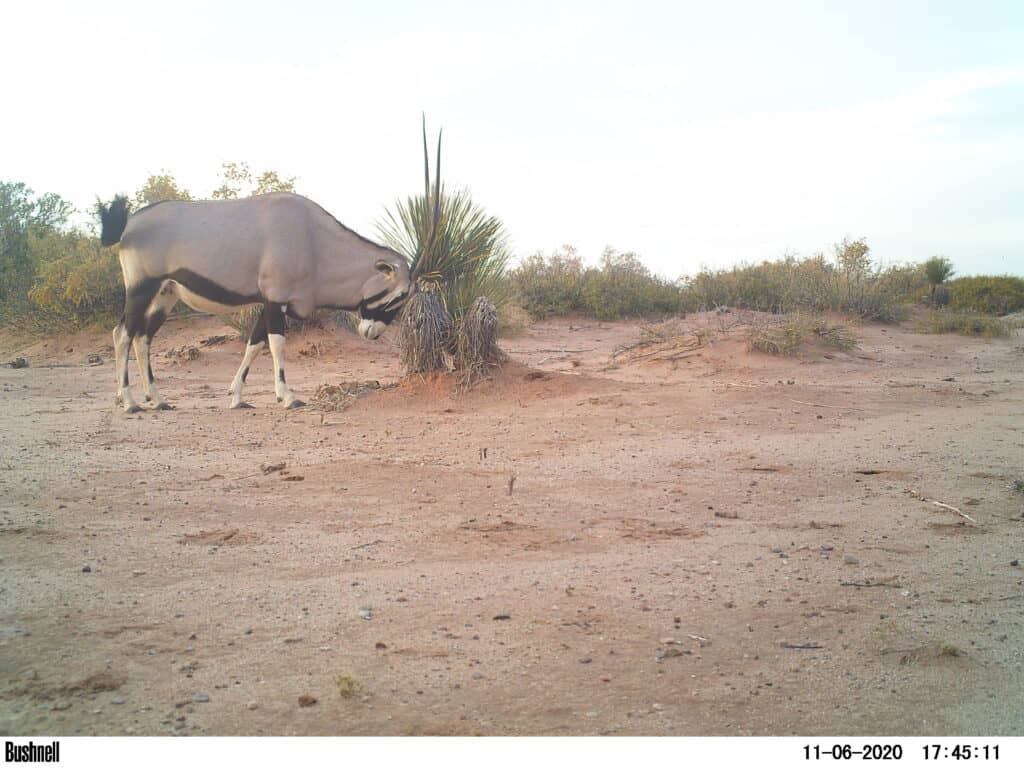
In New Mexico, the animals have caused some issues at the White Sands Missile Range, where they sometimes block the runway. They also cause an added risk on roads, causing collisions.
They also have few, if any, predators. However, trail cameras at the Armendaris Ranch have revealed that some cougars have taken a liking to exotic meat. Prude’s research has found that a single cougar (Puma concolor) is likely responsible for 29 oryx kills—oryx comprised about 58% of the total kills recorded for that cat. Most oryx killed by cougars were neonates, but the researchers documented the cats taking a couple adults.
“The fascinating thing for me was that one individual that killed like 20 to 30 oryx,” Wagnon said.
The issue also has political implications. Oryx were initially introduced as a game species, and hunters enjoy the chance to harvest these charismatic animals. Sales of hunting licenses for the ungulates provide a lot of revenue for the New Mexico Game and Fish Department. Meanwhile, some fenced ranches in neighboring Texas also hold populations.
“It’s one of these complex things,” Wagnon said.
This post was updated 3/15/23.
Header Image: Oryx were introduced to New Mexico starting in 1969. Credit: Hunter Prude



